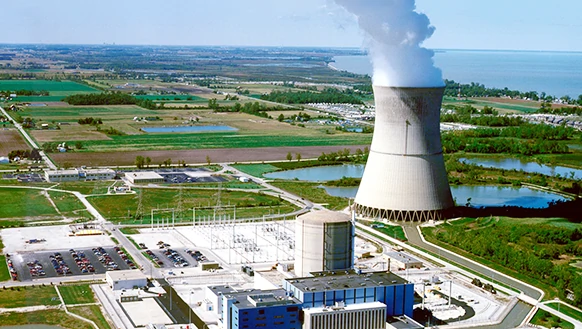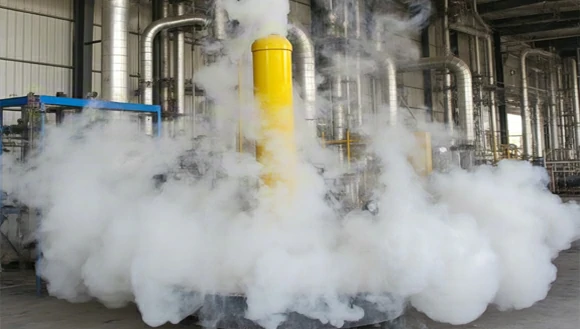Chlorine Dioxide (ClO2) is a valuable tool for odor control in power plants due to its oxidizing and disinfecting properties.
How Chlorine Dioxide Controls Odors in Power Plants:
1. Chlorine Dioxide Generation: Sodium chlorite can be used to generate chlorine dioxide, a potent oxidizing agent that is highly effective in deodorizing and disinfecting applications. Chlorine dioxide reacts with odorous compounds and microbes, effectively neutralizing odors and controlling bacterial growth in the plant environment.
Chlorine Dioxide can effectively neutralize and eliminate a wide range of odors, including those associated with hydrogen sulfide (H2S), mercaptans, ammonia, and other malodorous compounds commonly found in power plant environments. It works by oxidizing and breaking down these odor-causing compounds, thereby reducing unpleasant smells.
2、Biocidal Properties: In addition to its odor control capabilities, chlorine dioxide exhibits biocidal properties that can help control microbial growth and mitigate biofilm formation in power plant equipment and infrastructure. By inhibiting bacterial growth, sodium chlorite can contribute to odor prevention and maintenance of a cleaner plant environment.



Benefits of Using Sodium Chlorite:
1. Effective at Lower Doses: Compared to other oxidizing agents like chlorine, sodium chlorite is effective at lower dosages for odor control. This reduces the amount of chemicals needed and minimizes the formation of potentially harmful disinfection byproducts (DBPs).
2. Broader pH Range: It maintains its effectiveness across a wider range of water pH levels, which can be advantageous in power plants with fluctuating water conditions.
3. Reduced Chloramines: Unlike chlorine, sodium chlorite doesn't react with ammonia to form chloramines, which can persist in water and potentially contribute to odor issues.
Application Methods: Sodium chlorite solutions can be applied using various methods, such as direct injection into process streams, misting or spraying systems, and circulation in wastewater treatment systems. The appropriate application method will depend on the specific odor sources and environmental conditions in the power plant.
Safety Considerations: When using sodium chlorite for odor control in power plants, safety precautions should be taken to ensure proper handling, storage, and dilution of the chemical. Personnel handling sodium chlorite should be trained on its safe use, and appropriate personal protective equipment should be worn to prevent exposure.


Monitoring and Maintenance: Regular monitoring of odor levels, chlorine dioxide residuals, and equipment performance is essential to ensure the continued effectiveness of sodium chlorite in odor control applications. Periodic maintenance of odor control systems and adjustment of dosing rates may be necessary to optimize odor control efficiency in the power plant.
In summary, sodium chlorite can be a valuable tool for addressing odors in power plant environments, offering a reliable and efficient means of odor control. By understanding the specific odor sources, implementing appropriate application methods, prioritizing safety, and ensuring regulatory compliance, sodium chlorite can contribute to a more pleasant and productive working environment in power plants.